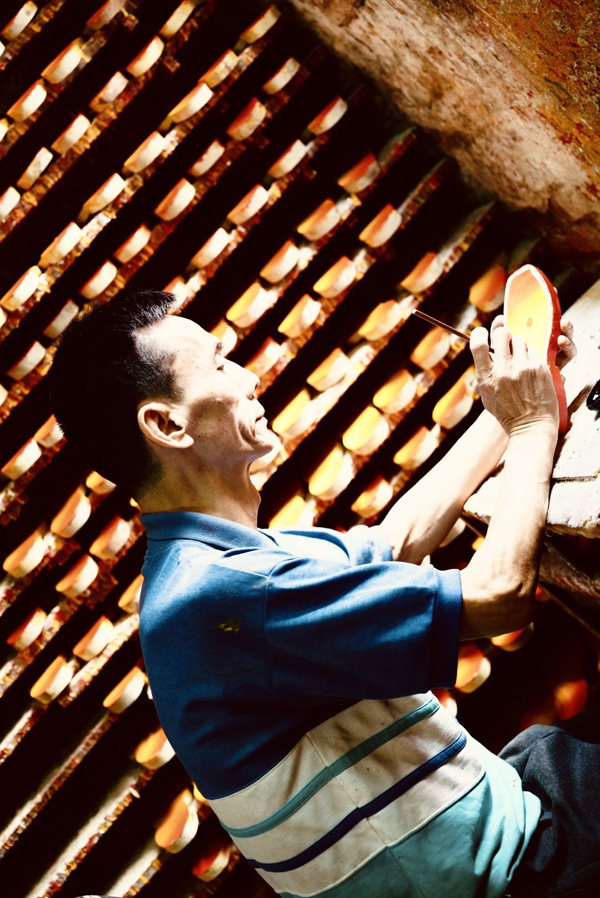Clog maker carries on timeless craft in South China

Liang Jinquan makes clogs in his workshop. [Photo provided to chinadaily.com.cn]
Liang Jinquan said he would make clogs all the time if local residents still like the shoes he makes.
Liang, born in 1962, who has been making clogs for more than three decades, is now the only person who can make clogs in Dongguan, South China's Guangdong province.
"Now more and more young people are showing their increasing interest in the traditional items and that encourages me to continue to make clogs," said Liang, a native of Shilong township in Dongguan, adding clogs have been worn by Chinese for thousands of years.
Every day, Liang arrives in his 10-square-meter workshop, located near the town's Zhongshan Park, polishing, drawing and nailing the surface of wood to make the clogs.
"It is not easy to make a pair of good-looking clogs by hand, as it takes nearly 20 processes from making the boards to the final completion," Liang said.
Meanwhile the clogs need to be decorated with colorful traditional landscape, flower and bird patterns, including pine trees and cranes, the sun, a dragon and phoenix, as the paints and patterns usually have meanings such as, "being promoted step by step", "everything going smoothly", "becoming rich and honored", and "bring health and auspicious longevity" according to Liang.
"Therefore, the clog makers need to have some artistic skills and know aesthetic culture," he added.
Although few people now wear clogs to go out, they buy the clogs, to wear during ceremonies and important occasions, including weddings and moving into new houses.
According to local wedding customs, the bride usually wears a pair of clogs after having finished dressing up at home before dawn while awaiting for her bridegroom to arrive to pick her up for the wedding ceremony. And the bride usually wears the clogs to walk out of her home slowly to board the bride's car for a wedding banquet.
One month after a marriage, two new pairs of clogs are added to the new couple's room, as a meaning to pray for children and happiness.
Liang started learning to make clogs in local workshops as an apprentice in 1984.
He said clog stores in Shilong township reached their peak business periods in the 1950s when dozens of stores and workshops produced and sold clogs in the tiny township.



 Print
Print Mail
Mail

